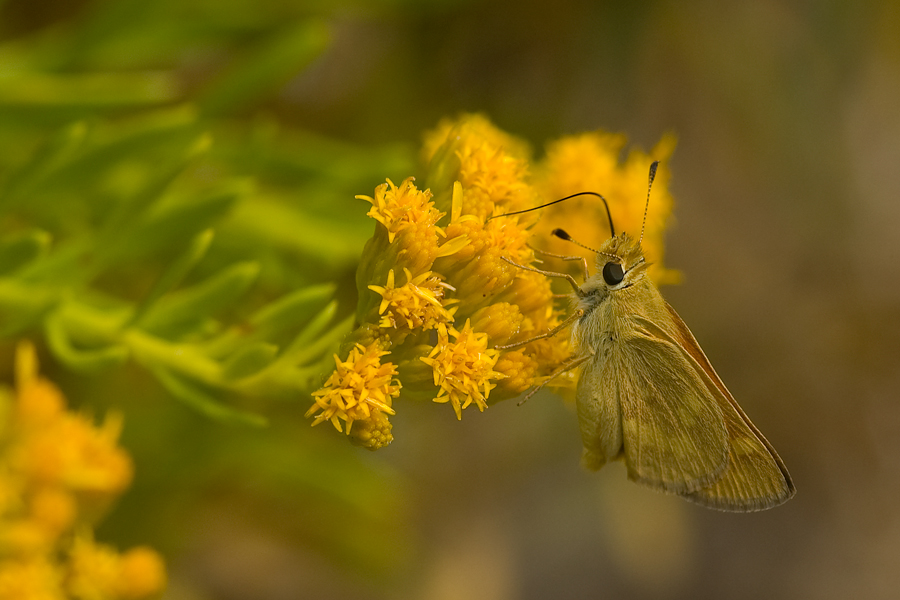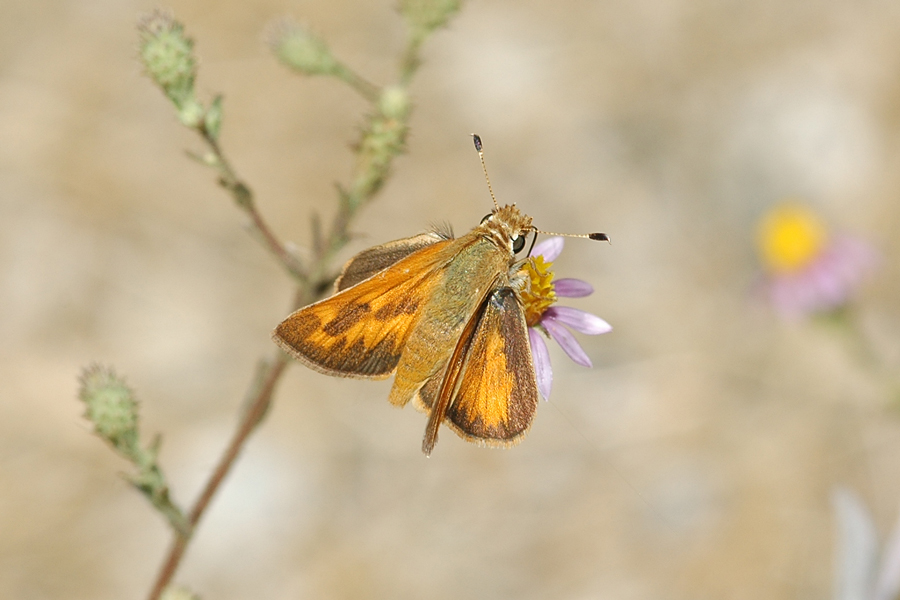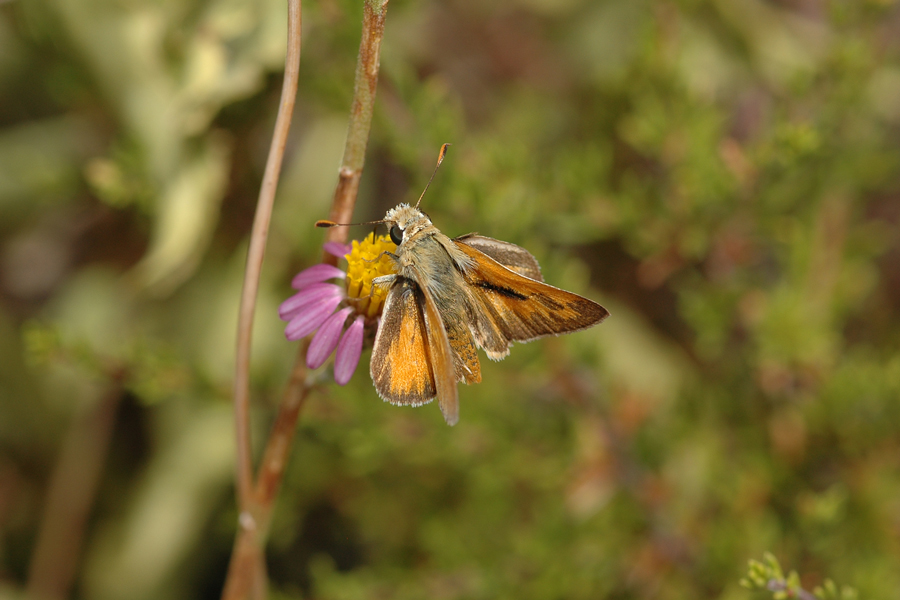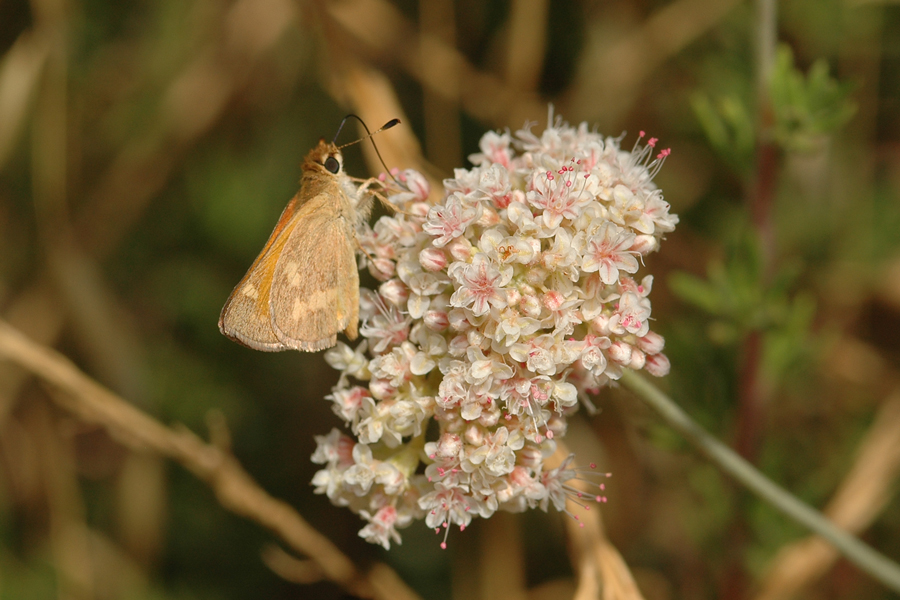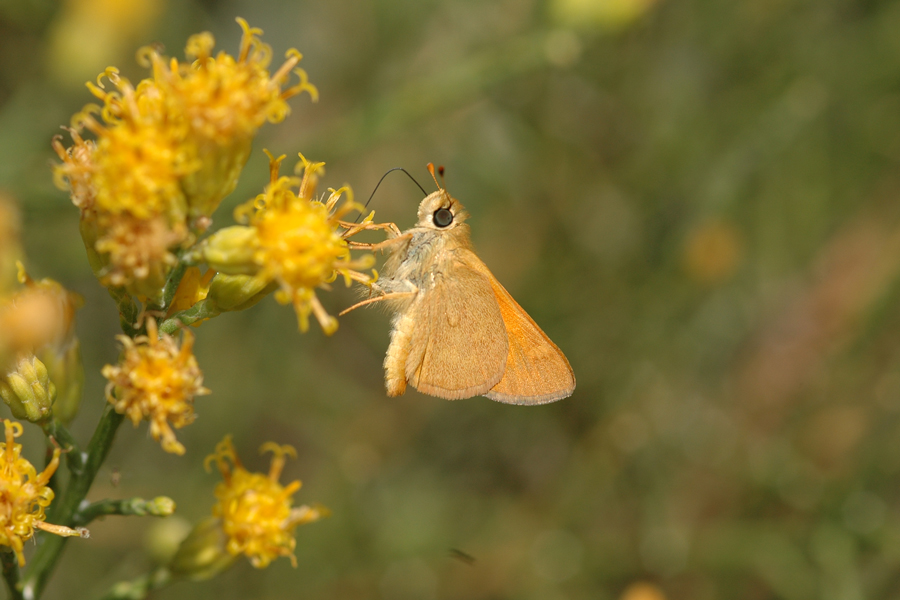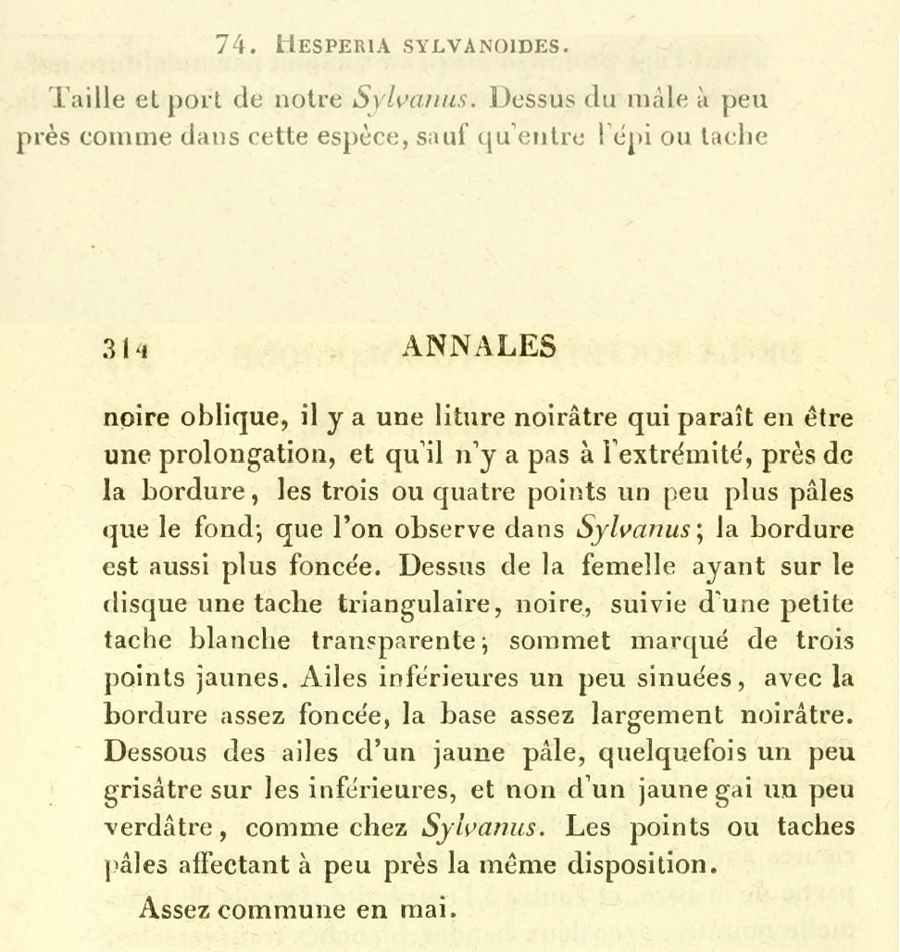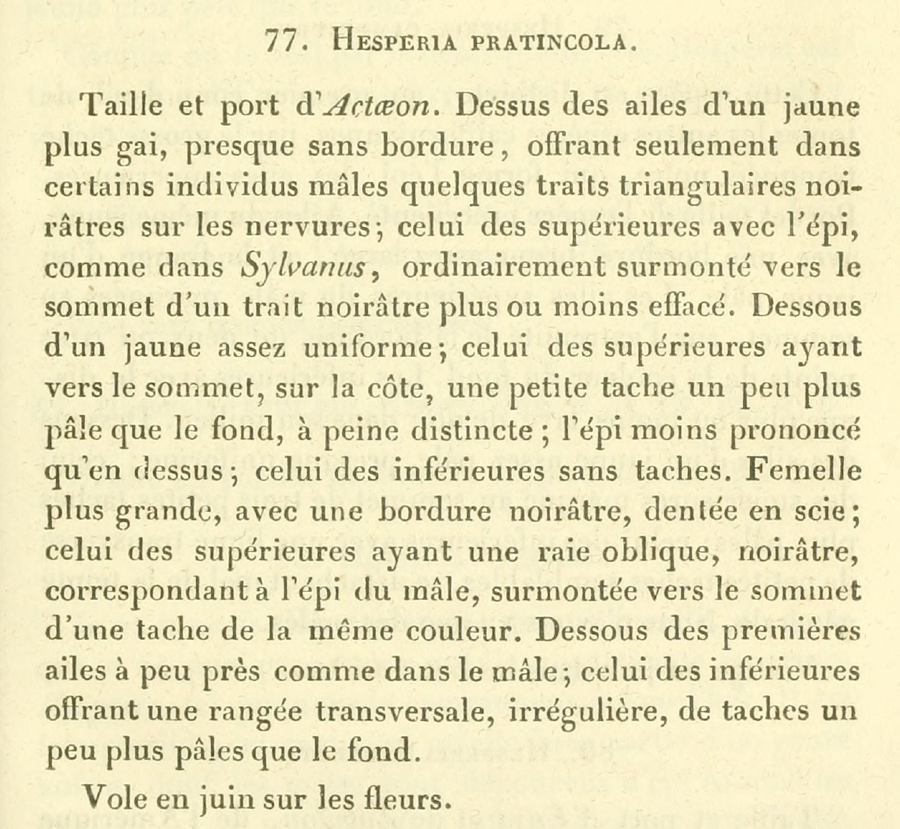Ochlodes sylvanoides sylvanoides
Woodland Skipper
This is a common late-summer skipper found along our mountain trails. Generally these are single-brooded and adults emerge beginning in July and are on the wing into October. In the San Gabriels in 2019, for instance, sylvanoides began flying mid-July and overlapped the earlier flight of Ochlodes a. agricola, which is a May-to-July flyer. In Santa Anita Canyon, which I was visiting regularly, by July 22nd the agricola flight was nearly over, and sylanoides was becoming dominant. Learning to tell the two apart has been an interesting exercise given the amount of variation in each species. They both were common, especially on Erigeron foliosis (fleabane).
This skipper was named by Boisduval in a 1852 paper (it's complicated - see below). It was collected by Lorquin in the Bay Area, and Emmel, Emmel and Mattoon (in the 1998 Systematics book) resticted the type locality to the Queen Lily Campground in Plumas Co. Several populations are distinctive and have been given names, including the island subspecies catalina and santacruza.
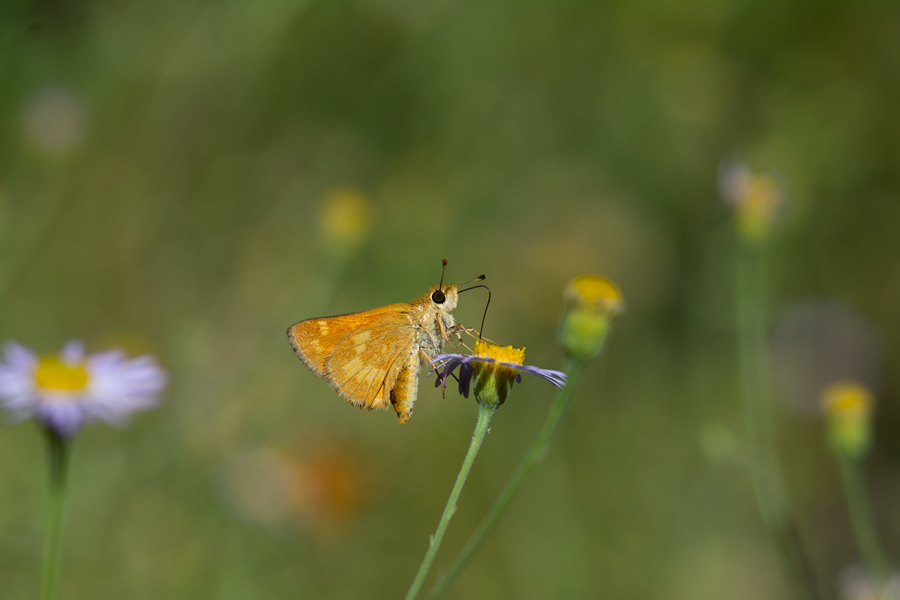
Ochlodes s. sylvanoides on fleabane in the San Gabriels, a common sight in late summer. Santa Anita Canyon, August 9, 2019.
Ochlodes sylvanoides taking nectar at rabbitbrush along the S1 not far from Kwaaymii point in San Diego Co., September 4, 2011.
Female woodland skipper from San Gabriel Canyon August 13, 2005.
Male woodland skipper from the Laguna Mountains in San Diego Co, August 25, 2007. Note the stigma.
Another sylvanoides, this one from Bear Canyon off the Ortega Highway. August 10, 2005.
These skippers sometimes appear unmarked or nearly so. This is the phenotype that confused Boisduval, who thought it was a different species (see below). San Gabriel Canyon on August 13, 2005.
Boisduval's description of (what he believed to be) sylvanoides from his article "Lepidoptères de la Californie," in the French journal Annales de la Société Entomologique de France, 1852, in which he named many California butterflies, most of which he received from Pierre Lorquin. Lorquin was in California for the gold rush but also collected many of our most common butterflies and other insects, which were often new to science at the time. Unfortunately, the female he was describing here was in fact Atalopedes campestris, not sylvanoides. See the discussion below and on pp.20-22 in Systematics (where I got my information) for more details.
This is Boisduval's description a couple of pages later of what he called pratincola. According to Emmel, Emmel and Mattoon in the article referenced above, what Boisduval actually had was a not-atypical lightly-colored male sylvanoides, and a female sylvanoides he didn't recognize as such. See below for more.
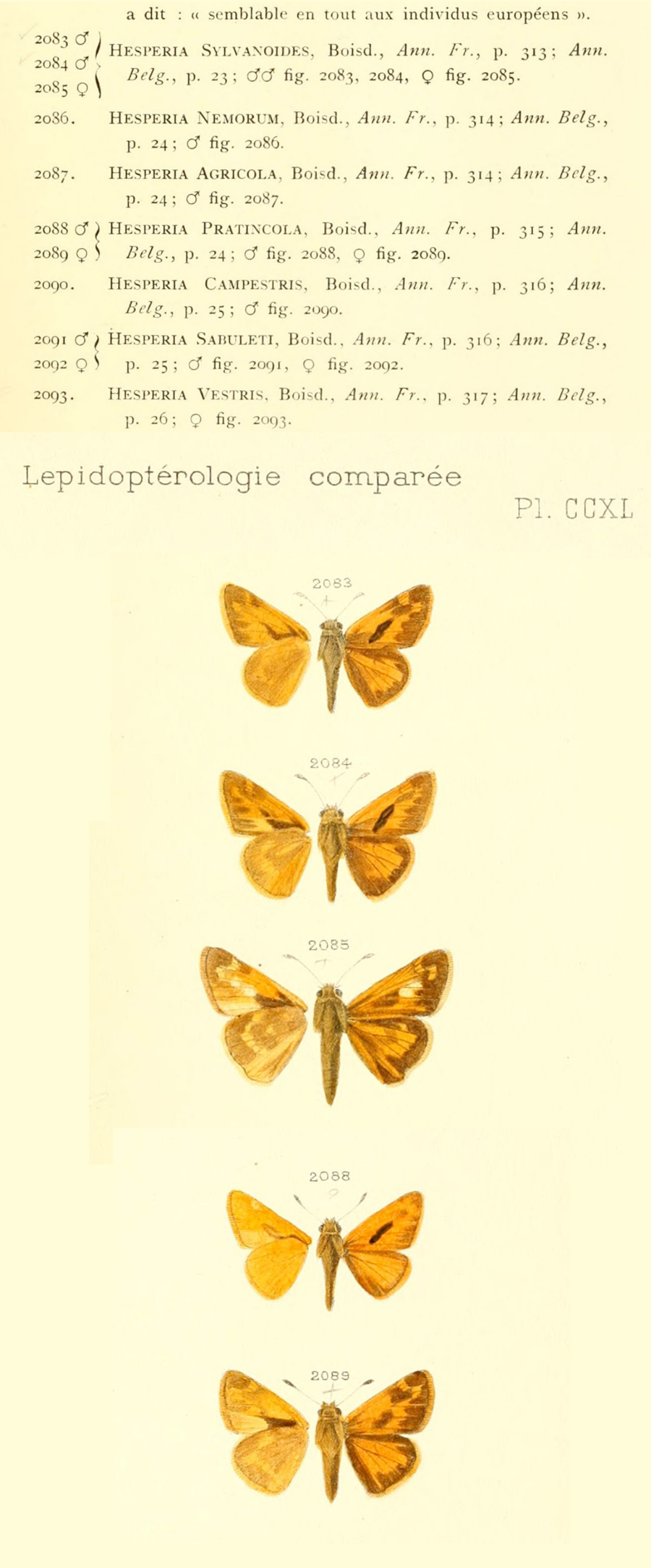
Boisduval's skippers from Lorquin's explorations in gold rush country ended up in the British Museum, and were illustrated in a 1913 publication by Charles Oberthür, Études de Lépidoptérologie Comparée (I've made a sort of collage here to simplify things). According to the Systematics article, figure 2085 is a female Atalopedes campestris (Sachem or Field Skipper), not a female sylvanoides (Boisduval thought he only had males of campestris but was mistaken). Figure 2088 - purporting to be a male of a new species Boisduval called pratincola - is in fact a light sylvanoides as stated above (and see my photo above from the San Gabriels of a similar phenotype). Figure 2089 is a typical female sylvanoides, thought to be a different species by Boisduval. Put a different way, all three males (2083, 2084, and 2088 above) are in fact sylvanoides; the true sylvanoides female (2089) was placed under the name pratincola, and for the female sylvanoides (2085), Boisduval unfortunately was looking at a Sachem, Atalopedes campestris. So we can forget about pratincola; Boisduval had male and female sylvanoides before him but - like many of us when we first got to know these grass skippers - he got thrown by the variety and made several misidentifications.
©Dennis Walker

